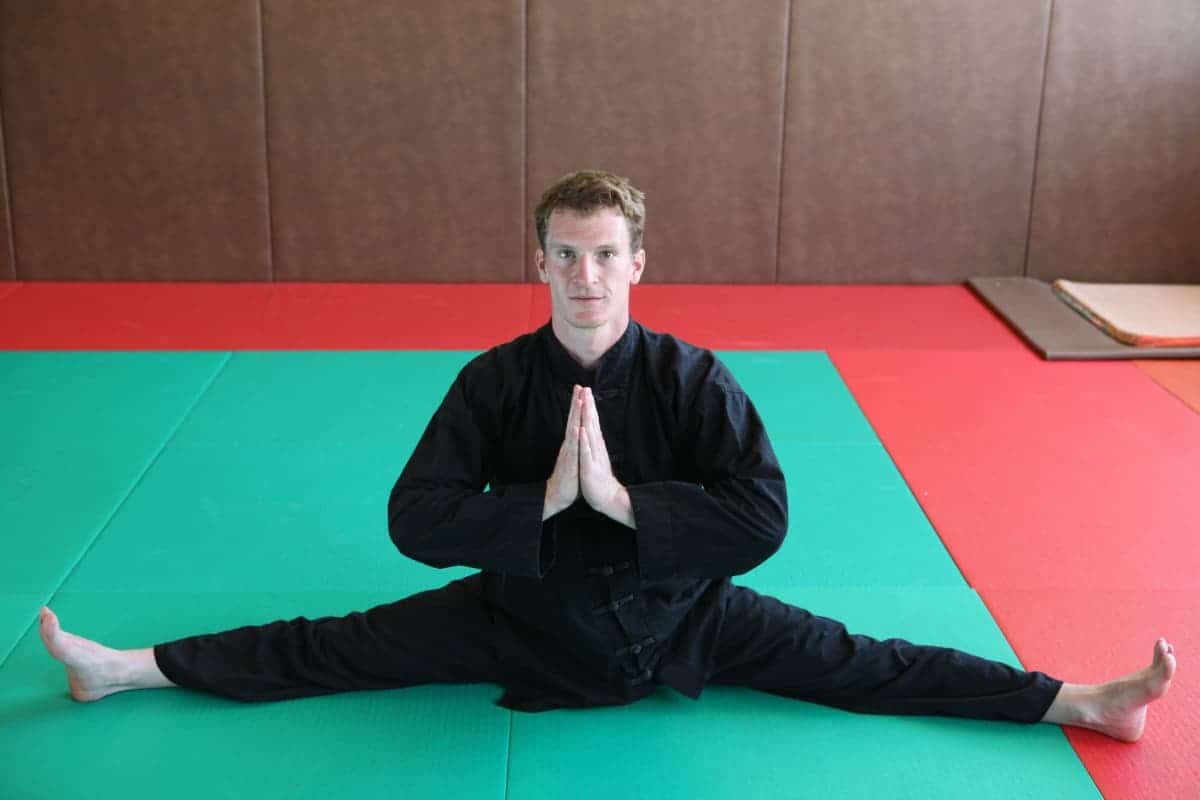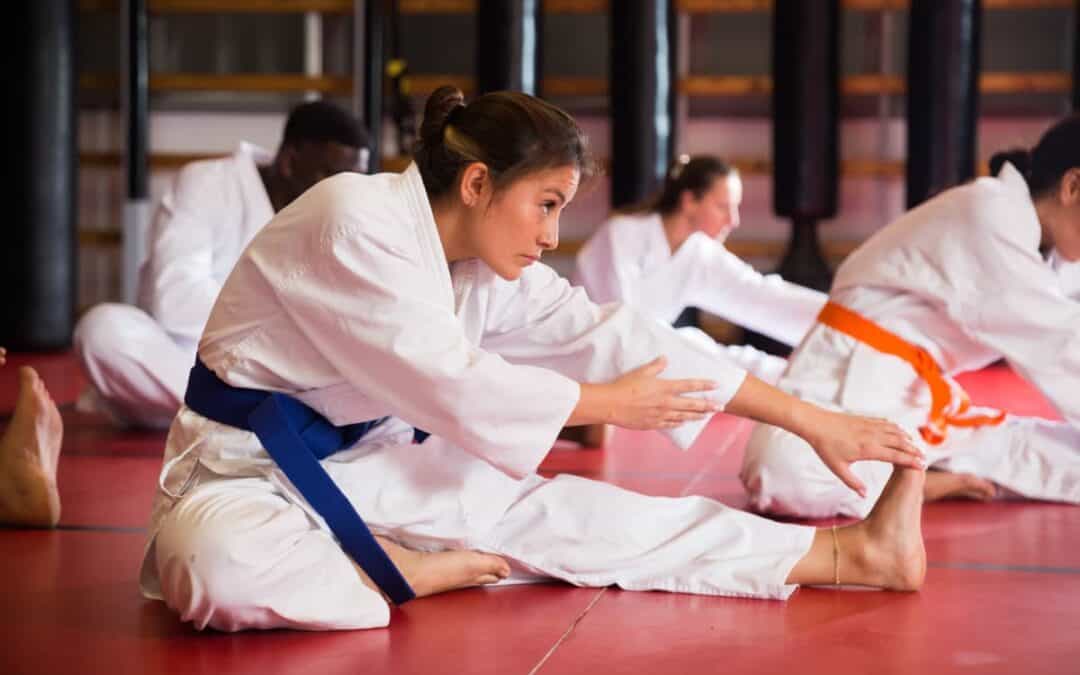Stretching before you practice martial arts is an effective way to boost muscular function, improve your technique, and reduce the effort required to perform specific movements. Stretching is also crucial to help reduce the likelihood of injury while training. But what kind of stretching is required before martial arts training?
Ballistic, dynamic, and static stretches are often done before martial arts training. Most martial arts focus heavily on the shoulders, core, hips, groin, and hamstrings. As such, practitioners can benefit from stretching these parts of their bodies before they begin to practice.
In this article, we’ll explain the different kinds of stretches effective for martial arts training and show you an example for each body segment.
Table of Contents
Types of Stretching
Flexibility is loosely defined as the ability of a series of joints to move through a pain-free range of motion.
For the sake of this article, we will focus exclusively on three types of stretching that benefit the body before a martial arts training session.
Ballistic Stretching
In ballistic stretching, you use the force generated by your body to push a joint beyond its normal range of motion. For example, stand straight, swing your right leg towards your face (as far as possible) and back down repeatedly.
This stretching is effective for warming up and getting the joints lubricated before stretching deeper.
Static Stretching
Static stretching is what most people refer to when they talk about stretching. This movement involves getting into an extended position and holding this position for a few breaths or minutes.
Static stretching is a safe way to prepare for martial arts training, as you don’t have to push your body beyond its normal range to get a good stretch. Additionally, static holds also decrease the likelihood of injury.
Dynamic Stretching
Dynamic stretching is akin to a combination of static and ballistic stretching. Unlike static holds, dynamic stretches require regular movement, almost like doing reps. For example, leaning forward and down till you touch your toes and coming back up the same way is a dynamic stretch.
Dynamic stretches are good for warming the body while gently opening up the joints and increasing the range of motion before a practice session. It’s best to incorporate all three types into your stretching session before you begin martial arts training to improve your range of motion, learn skills quickly, and reduce the risk of injury.
How To Stretch Different Body Parts
This section will cover the main body segments that must be stretched out before a martial arts session.

Shoulders and Chest
Stretching the shoulders and chest is essential for releasing rigidity in the upper body. One of the most effective stretches is the assisted squat.
- Stand with your back facing a table or ledge.
- Place your palms on the table while still facing forward.
- Squat towards the ground, lowering your body while keeping your arms in place.
Core
You derive most of your power from your core, and activating it before a martial arts session will give you that extra oomph. The quickest way to stretch and activate the core is by performing the cobra pose (bhujangasana).
Lie flat on your stomach and lift your upper body off the floor using the muscles in your back and support from your hands. Ensure your hips stay on the floor the whole time.
Hips
The hips control the motion of your legs and grant you the mobility needed for kicks and grappling. Tight hips can lead to an unwanted leg injury, so it’s best to warm them up before practice. The quickest way to warm up your hips is by performing hip rotations.
Groin
Groin injuries are probably most common among martial artists considering the strain placed on this area during kicks, takedowns, and grappling maneuvers. The most effective way to stretch your groin is by performing a side lunge. To do so, you should:
- Stand with your hips shoulder-width apart.
- Point your feet forward and lower your body to the floor, bending your right leg and keeping your left leg straight.
- Continue bending to the point where it’s comfortable, placing your right hand on your right leg for support.
- Repeat this stretch on the other side.
Hamstrings
The hamstrings tend to get tight, especially if you work a desk job where your lower back is stiff for extended periods. The best way to relieve hamstring tension is by performing a forward fold (uttanasana).
This stretch relieves hamstrings, glutes, and lower back tension, allowing your feet to move freely during your workout.
Final Thoughts
Regular stretching will help you stay injury-free and increase the speed at which you learn martial art skills. It’s best to figure out a proper stretching routine and perform it every time you plan to train.
Some common stretching techniques you can incorporate into your routine include ballistic, static, and dynamic stretching.

